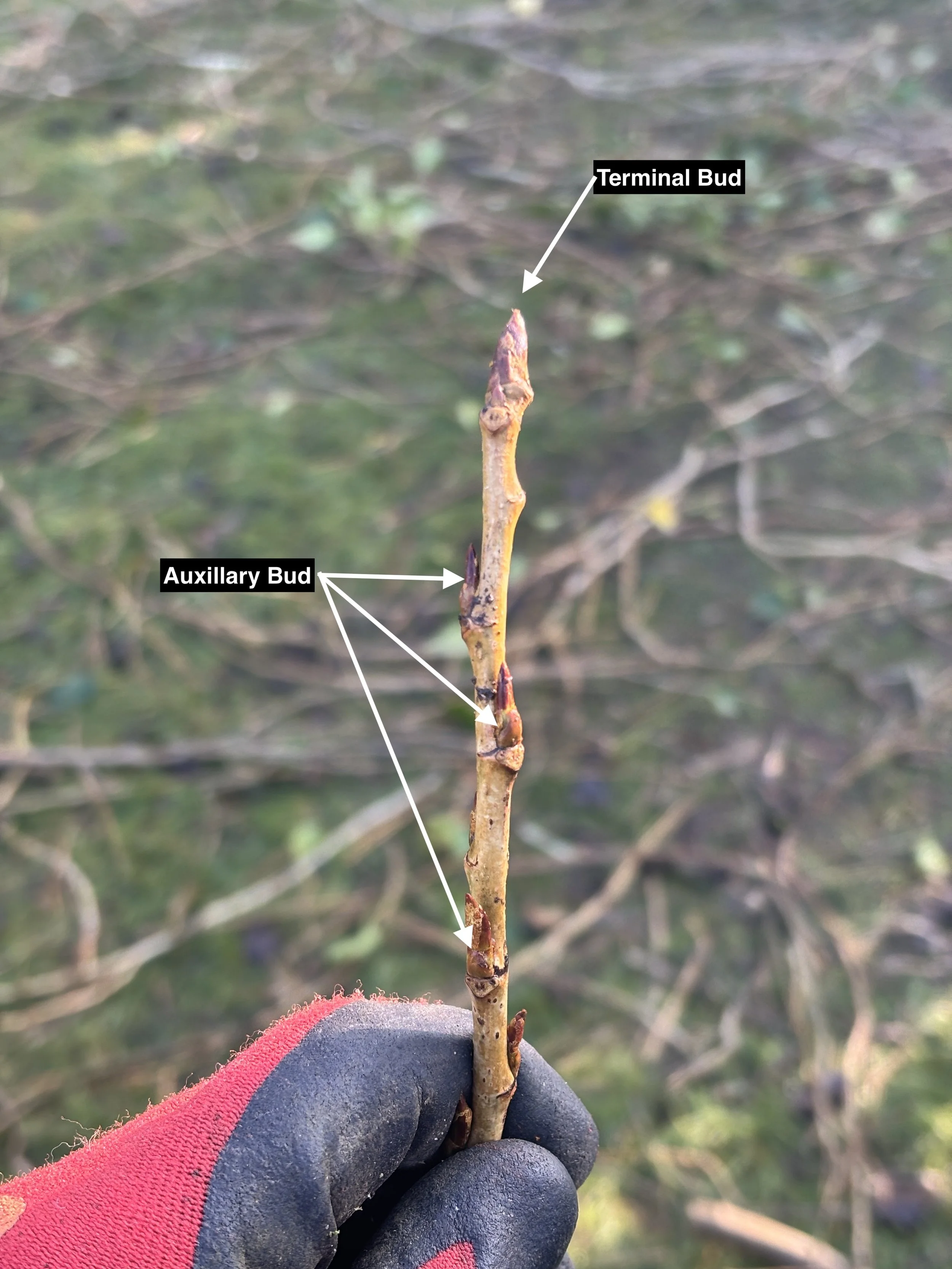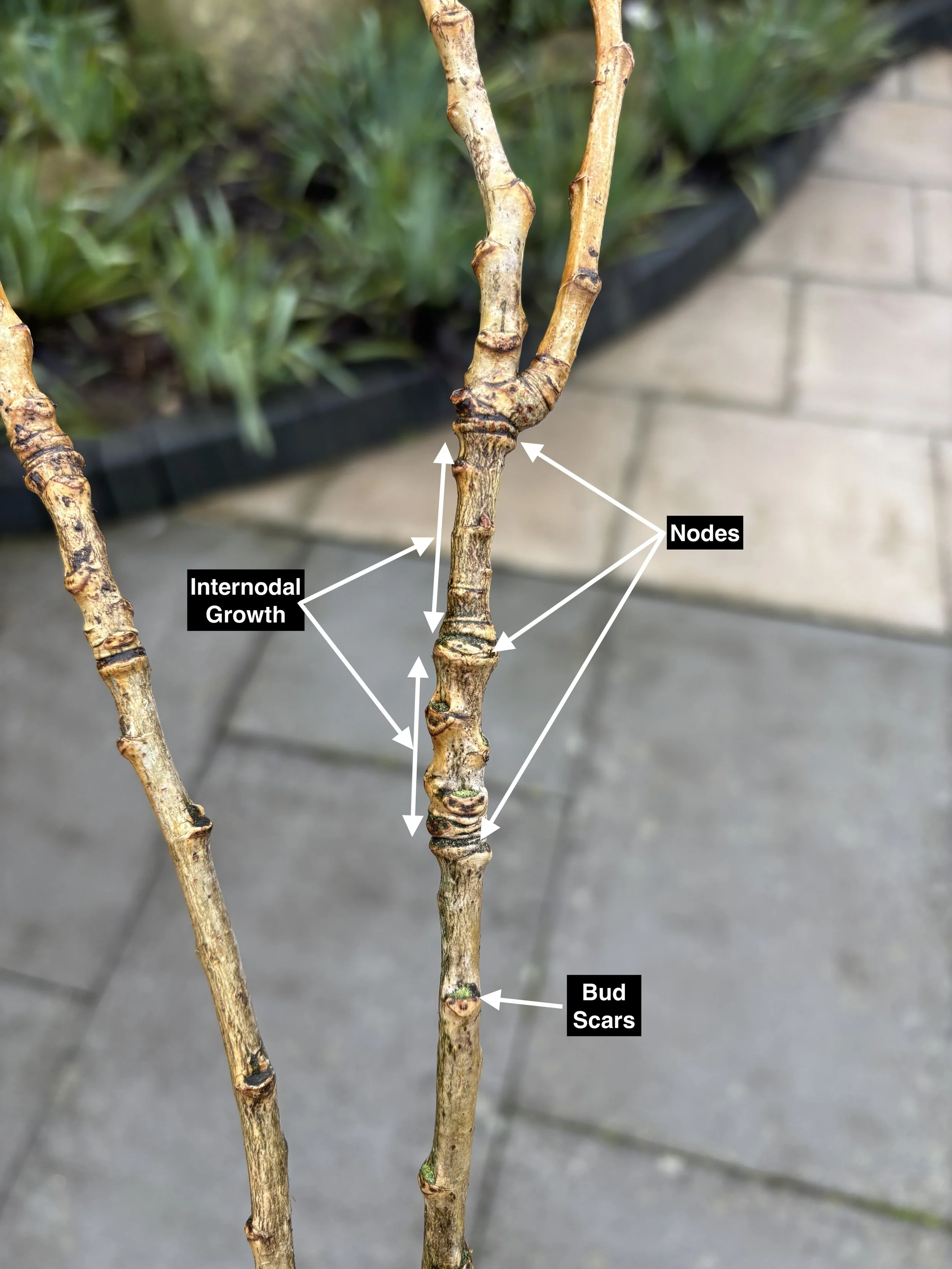Shoot development and secondary growth
What are shoots?
A shoot is the term given to the above ground system of vascular plants. When shoots develop apically or ‘at the tips’, this occurs one of two ways, monopodial where new primary tissue is formed from the terminal bud at the last node or sympodial where it is formed from a secondary or psuedoterminal bud when the terminal bud is aborted (Pollardy, 2008). New primary tissue, which is new cells directly formed from apical meristems occurs when mitosis is triggered by growth hormones such as auxin or gibberellin. The cells now go through three phases, cell division, elongation, and differentiation, and can form areas of simple cell formations such as parenchyma or more complex area where more than one type of cell is present such as phloem (Hirons and Thomas, 2017). This period of apical growth ends with the formation of a node and a terminal bud and the section between nodes is called inter-nodal growth or extension growth, extension growth can be a good visual cue of a trees physiological condition when considered against its age and environmental factors.
There are three main types of shoot growth:
Fixed (determinate): Growth from preformed buds from the previous year, flushing in the next season (e.g., Fagus, Picea, Fraxinus).
Free shoot growth (indeterminate): New buds and leaves form throughout the current season (e.g., Betula, Larix, Ginkgo, Malus, Populus).
Late-season shoots: Triggered by environmental factors like mild temperatures or rainfall. Proleptic: Growth from new lateral buds at the base of the terminal bud. Lamas: Early elongation of newly formed terminal buds.
Video 1: Zones of Cell Growth, Meristematic Tissue and Growth (Mr Ruel Tuition, 2021)
In vascular plants, growth is not limited to just ‘getting taller’ or producing new foliage. As trees grow, they develop thicker stems through a process called secondary growth. This is the lateral thickening of stem and branch material, and this occurs through the division of lateral meristems in two areas called vascular cambium and cork cambium (Hirons and Thomas, 2017). Like apical meristem cells, they go through the same three stages, cell division, elongation and differentiation where they gain their end function.
There are two types of new tissue formed.
Simple tissue: which consists of one type of cell such as parenchyma which are a supportive tissue that surrounds and supports the vascular bundles.
Complex tissue: which consists of two or more different cells such as phloem, which consists of a sieve tube and companion cell.
As the vascular bundles develop as the tree grows the form a continuous ring called the vascular cambium which encompasses the tree. New xylem cells are formed internally to the original and new phloem is formed externally to its original cells (Hirons and Thomas, 2017). Within the vascular cambium there are two type of meristem cell initials.
Fusiform initials: which create new cells that are axially orientated such as axial parenchyma, vessel cells and tracheids.
Ray initials: these form new radially orientated cells such as ray tracheids and ray parenchyma.
The cork cambium is the other lateral meristem which is responsible for the development of new bark. It is formed from secondary phloem and a periderm tissue called rhytidome.



